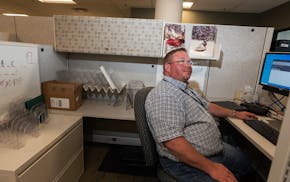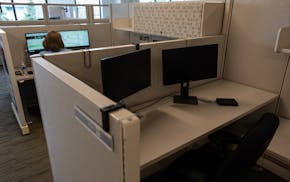The federal pandemic aid that helped keep school districts afloat expired Monday, and in Minneapolis and St. Paul, teachers and education advocates renewed a call for full federal funding of public schools.
Cuts have been made and reserves tapped as the two districts braced for the end of their respective windfalls, and in November, Minneapolis will ask voters for funding help as it seeks firmer footing in the face of rising costs and swelling class sizes.
St. Paul, like Minneapolis, had to fill a $100 million-plus budget gap this school year, and that meant trimming dozens of specialist teaching positions and enacting other cuts to sustain programs funded by the federal COVID dollars, including a literacy initiative that officials say is showing promise.
"COVID funds gave SPPS the opportunity to focus on what students actually need to be successful learners," said Nicki Nolen, a reading instructor at Adams Spanish Immersion Elementary School. "Students, parents and educators all saw our students improve."
St. Paul's teachers staged morning "walk-ins" on Monday as part of a national campaign to draw attention to the expiration of COVID aid and the need for the federal government to fully fund its share of Title I and special-education costs — the latter being an as-yet unsuccessful decadeslong pursuit.
Democratic U.S. Rep. Ilhan Omar, who is co-sponsoring legislation to replace the pandemic aid, appeared at an afternoon news conference alongside Minneapolis union leaders and Becky Pringle, president of the National Education Association, outside Lucy Craft Laney Elementary School in Minneapolis.
Kim Ambers, a veteran education support professional at the school, said the COVID funds made possible the hiring of additional support staffers to work with students who lost ground during the pandemic. Her hours were extended, too. But this year, her hours were cut, and many of the extra positions eliminated.
"This means less time for checking in on how students are doing and what they need, and less time to strategize with teachers," Ambers said. "I could understand if the student behaviors and needs were back to pre-pandemic levels, but sadly, that's not our reality."
For several years, school districts have known of the so-called "fiscal cliff" that would come with the drying up of federal pandemic aid, and the 2024-25 budgets approved by the Minneapolis and St. Paul school boards took those losses into account and sought to minimize the pain through the use of reserves.
Minneapolis is drawing down about $55 million, while St. Paul plans to tap $37 million in rainy-day funds. But the squeeze still is being felt. Classroom teachers, not specialists, are handling art and music instruction at seven St. Paul schools, and parents are growing increasingly frustrated over larger class sizes in Minneapolis.
St. Paul used pandemic funds to support struggling students through interventions grounded in the phonics-based "science of reading," and learned that students who participated in the program known as WINN showed greater progress during the year than those who did not.
Now the district is spending $7 million of its own money to pay WINN teachers.
Altogether, St. Paul received $319 million in federal pandemic funds, and invested not just in academic recovery efforts, but also after-school programming, social workers and counselors, and staff retention bonuses, among other items. Cash-strapped Minneapolis relied heavily on its nearly $265 million to plug budget gaps and now faces tough decisions that could include school mergers and closures.
Omar noted how many school districts were forced to cut just a year after a historic $2.2 billion state investment in schools. Legislators must "keep their foot on the gas to fully fund our schools," she said.
With the school year now underway, Marcia Howard, president of the teacher chapter of the Minneapolis Federation of Teachers, said the union has surveyed members about current class sizes and has fielded reports of classrooms with 26 kindergartners, 38 fourth-graders and 60 choir students.
At South High, she said, there is an International Baccalaureate teacher with 200 history students.
"Imagine for a moment how you would read 200 students' work that they turned in," Howard said.
She said the union now is working with Superintendent Lisa Sayles-Adams to try to get new hires — not just teachers, but support staffers who can help ease the pressures of a crowded classroom.
"In the end, it all comes down to funding," Howard said. "And all of our collaboration and cooperation doesn't preclude me from still saying we need to change the way we prioritize our budget."

After years at home, thousands of Minnesota state workers are about to return to the office
In South Carolina, Walz says Democrats 'need to change the attitude'

On the campaign trail, Elon Musk juggled drugs and family drama

Grand Avenue reconstruction unearths streetcar tracks, showing St. Paul's past

